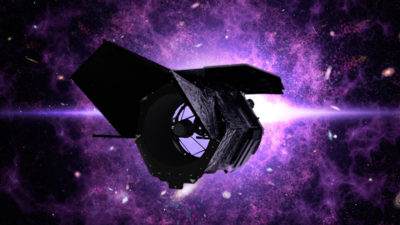Astronomers face a significant hurdle: determining a star’s age after it reaches its stable nuclear fusion phase.
Unlike humans, stars like our Sun show minimal changes for billions of years. However, one exception offers a solution: a star’s rotation period.

The Telltale Spin: How Rotation Reveals Age
Stars begin their lives spinning rapidly. But stars with a mass similar to or less than our Sun experience a gradual slowdown over billions of years. This deceleration is caused by the interaction between a charged particle stream (stellar wind) and the star’s magnetic field. Similar to an ice skater slowing down with outstretched arms, this interaction removes angular momentum, causing the star to spin slower.
This phenomenon, known as magnetic braking, varies depending on the strength of a star’s magnetic field. Faster-spinning stars possess stronger magnetic fields, leading to a more rapid slowdown. Remarkably, after roughly a billion years, stars with the same mass and age will exhibit the same rotation rate due to the influence of these magnetic fields.
Therefore, by understanding a star’s mass and rotation speed, astronomers can estimate its age. This knowledge of a large stellar population’s age unlocks secrets about our galaxy’s formation and evolution over time.
Unveiling the Spin: Measuring Stellar Rotation
Astronomers use variations in a star’s brightness caused by starspots to measure its rotation rate. These starspots, similar to sunspots on our Sun, are cooler and darker regions on a star’s surface. When a starspot faces Earth, the star appears slightly dimmer compared to when the spot is on the opposite side.
By measuring these brightness fluctuations, astronomers can infer the star’s rotation period. The Nancy Grace Roman Space Telescope, once launched by May 2027, will collect brightness measurements for hundreds of thousands of stars positioned towards the Milky Way’s center, providing valuable data on their rotation rates.
The challenge arises when a star possesses numerous spots scattered across its surface at any given time. These spots can vary over time, making it difficult to isolate the periodic dimming signals caused by the star’s rotation from the overall brightness variations.
Enter Artificial Intelligence: Aiding the Quest
A University of Florida team is developing innovative techniques using artificial intelligence (AI) to extract rotation periods from a star’s brightness measurements. Their program, funded by NASA’s Roman Telescope project, utilizes a convolutional neural network to analyze light curves (plots depicting a star’s brightness variations over time).
The neural network first undergoes training using simulated light curves generated by a program called “butterpy.” This program allows users to set variables like the star’s rotation rate, the number of spots, and their lifespans. It then calculates how these spots emerge, evolve, and decay during the star’s rotation, converting this information into a light curve – essentially mimicking what astronomers would observe from a distant star.
The team has successfully applied their trained neural network to data from NASA’s TESS (Transiting Exoplanet Survey Satellite). While systematic effects pose challenges in precisely measuring longer rotation periods, the team’s AI system effectively determined these periods using TESS data.
Roman’s Stellar Survey: Unveiling a Galactic Census
The upcoming Roman Telescope, through its Galactic Bulge Time Domain Survey (one of its three core surveys), will gather data from hundreds of millions of stars. This survey will target the densely populated center of our galaxy, measuring how many stars exhibit brightness variations over time. These measurements will fuel various scientific investigations, including the search for distant exoplanets and the determination of stars’ rotation rates.
The astronomical community is still finalizing the specific survey design. The NASA-funded study on stellar rotation offers valuable insights that can potentially influence survey strategies.
“We can test various factors and determine what information we can extract from Roman data based on different survey approaches,” explains Jamie Tayar, the program’s principal investigator. “By the time we receive the actual data, we’ll already have a plan in place.”
With these advancements in AI and the Roman Telescope’s capabilities, astronomers are poised to unlock the secrets written in the spin of stars, unveiling the age and history of our Milky Way galaxy.



















